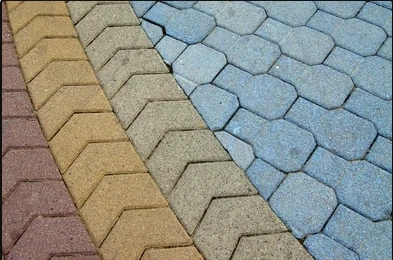How can you add life to Floors with Colored Concrete
If your house plans call for concrete floor slabs, don't directly assume you have to hide them under other flooring materials. Why waste resources and money adding another layer of flooring when the concrete can be left exposed? With the variety of concrete coloring products available today, it is possible to transform plain-grey concrete into a colorful, appealing flooring surface suitable for any room in the home.
The most difficult decision when it comes to decorative concrete floors is deciding between the plethora of colour options available, which range from basic brown to vibrant shades of purple, blue, and red. You can even adorn your floors with luminous metallic colours that look like silver or copper. Here's a roundup of the most common methods for coloured concrete floors, as well as ideas for implementing them in your own home, to help you sort through your options.
Integral Concrete Color
Integral colouring admixtures are one of the most straightforward methods for infusing rich, uniform colours into freshly laid concrete floors. Because they are mixed right into the concrete before placement, integral colours are simple and inexpensive to use. The colour is also permanent because it penetrates through the floor slab.
Keep in mind that the colour of the cement can affect the final results when using integral pigments. Integral colour, for example, will produce brighter, richer tones in concrete containing light or white cement. Concrete with greyer cement will have more muted colours. To ensure consistency, use cement from the same supplier throughout the project.
Best applications: To achieve uniform tones with no variations, integral colour is ideal for new concrete floors or floor overlays. It's also a good choice for a contrasting base shade for surface-applied colours like stains and dyes.
Concrete Stains
By far the most popular method for colouring residential concrete floors, staining allows you to achieve almost any look imaginable to suit your design tastes and budget. Unlike paint or coloured coatings, which produce a solid, opaque effect, stains permeate the concrete to produce fade-resistant, permanent colour.
You can use acid-based chemical stains or water-based stains to achieve the colour effects, you want for your stained concrete floor. Acid stains penetrate and chemically react with the concrete, resulting in natural colour variations resembling stained wood. However, the colour palette is dominated by earth tones like tans, browns, terracottas, and soft blue greens.
If you want to go beyond acid staining's subtle drama and subdued colour palette, consider using water-based stains, which come in a wide range of hues. In many cases, the different colours can be mixed, similar to how water-based paints can.
Best applications: Stains can be applied to new or old concrete floors, plain or integrally coloured. Water-based stains provide a wider range of colour options if you want to match an existing colour scheme or make a bold design statement. Chemical stains are frequently the best choice for achieving rich earth tones with natural colour variations.
Concrete Dyes
Although stains have long been the gold standard for colouring concrete floors, more decorative flooring contractors are expanding their colour palette with dyes. The growing popularity of dyes is due to their ease of use and colour vibrancy, which can be more intense than chemical stains.
Concrete dyes are available in water- or solvent-based formulations and can appear opaque or translucent depending on how they are applied. Use them at full strength for a deeper colour, or dilute them with water or solvents for paler shades or a light wash of colour. Contractors can easily mix dyes on-site to achieve custom shades that complement any design scheme.
Use dyes as a stand-alone colour or layer them over stains or integral pigments to enhance or amplify the colour. Many dyes also polish well, and some products are specifically designed to add rich colour to polished concrete floors.
Metallic Coatings
Metallic coatings, which allow you to "gild" your concrete to replicate the look of copper, silver, aged bronze, nickel, and other shimmery patinas, are one of the hottest trends in decorative concrete flooring. Some of these coatings use genuine metallic powders, while others make use of special reflective pigments. Metallic coatings may appear exotic, but they are installed in the same way that a standard epoxy floor coating is. You can enhance the dramatic effects by applying one or more metallic pigments over a base colour or by experimenting with different application tools and techniques.
Metallic coatings are ideal for creating a contemporary look with real wow-factor due to their dazzling colour effects.
Grey is no longer the only colour option for concrete floors. Whatever solution you choose, you can use concrete to add colour and interest to any home.
0


